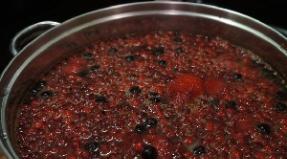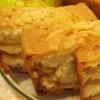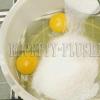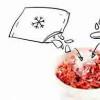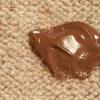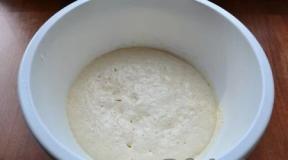Purification of moonshine from fusel oils at home. Rye bread instead of a filter
Cleansing moonshine from fusel oils is an integral step in obtaining high-quality alcohol at home. High quality moonshine is ethyl alcohol, separated from unnecessary impurities. If the moonshine is not purified during its distillation, then methyl alcohol, acetaldehyde and fusel oils will remain in the alcohol. The first two are toxic substances that, when ingested, lead to severe intoxication and death. Oils with a pungent ethyl odor are less harmful to the body, but they spoil the quality of the drink. People who practice home-made alcohol know how to remove odors and fusel oils from moonshine at home.
To understand the methods that allow you to independently cope with fusel oils, you need to understand their specifics. Sivukha is a by-product of the mash distillation process. Contained in raw alcohol, since its boiling point exceeds that characteristic of ethyl alcohol. Fusel oils are also called "tails", because when distilling moonshine, they are the last to volatilize.
The main advantage of the fuselage is that it gives the alcohol its characteristic smell and taste. It is believed that the presence of a component in consumed alcohol more quickly activates liver enzymes responsible for the processing of alcohol. But there is also the opposite opinion, according to which fusel oils cause a strong hangover after drinking alcohol.
Each moonshiner decides for himself whether to clear homemade alcohol from booze or use raw alcohol. If moonshine is the basis for the preparation of other alcoholic beverages, then it is better to get rid of fusel oils using effective proven methods at home.
How to clean?
Purification of moonshine from fusel oils is carried out before its distillation. So that there are few undesirable impurities in the finished alcohol, you need to take care of the quality of the mash. Double distillation will help get rid of the booze:
- the first distillation of moonshine is performed without dividing the raw material into fractions;
- in the second distillation, alcohol is divided into fractions: "heads", "body" and "tails".
To properly drive out the "heads" and "tails", you need to know their boiling point and the effect on the strength of the moonshine. One liter of the drink will always contain 50 milliliters of "tails", which should be guided by the selection of this fraction. When the temperature of the wash reaches 89 degrees, ethyl alcohol will begin to evaporate at this stage. Its selection continues until the strength of the moonshine drops to 40 degrees. When the temperature of the wash exceeds 91 degrees, fusel oils will begin to be removed from the raw materials.
Double distillation does not always allow you to get rid of the fuselage in full. Effective methods can be used to remove impurities from alcohol at home. Distillate purification methods are conventionally divided depending on the ingredient that allows you to remove fusel oils.
Coal cleaning
Activated carbon is a sorbent with a porous structure, due to which it quickly absorbs harmful impurities contained in alcohol. It is quite simple to clean moonshine with tablets:
- For each liter of liquid, take 50 grams of tablets.
- The ethyl product is poured into a glass jar and prepared charcoal is placed in it.
- In order for the alcohol to be properly cleansed, it must be infused for 10-14 days.
Then a clean jar is prepared, a plastic funnel is placed in its neck, inside which several layers of cotton wool are laid. Through an impromptu filter, you need to strain all the moonshine that was infused on coal.
Potassium permanganate
A mixture of potassium permanganate and soda will effectively purify alcohol. For manipulation, you will need 1.5 grams of potassium permanganate powder, diluted in a glass of chilled boiled water. When all the crystals are dissolved, add 10 grams of baking soda there. The composition is poured into the moonshine, the container is closed with a lid and shaken thoroughly. After that, the jar with the product is insisted for 14 hours, as a result of which it will separate from the alcohol and precipitate the fuselage.

Moonshine with a snack
Powdered milk
To improve the quality of moonshine milk, it is recommended to use a dry product. Milk is preliminarily diluted with water and poured into a container with moonshine. After the mixture is insisted for five days in a dark place. Milk protein, reacting with fuselage, settles it, as a result of which a thick white sediment forms at the bottom of the can.
After settling, the distillate is filtered through several layers of gauze.
Egg white
It is recommended to clean moonshine with chicken egg white only if sugar or was used to prepare alcohol. If berries and fruits were used in the preparation of raw materials, then this cleaning method should not be used, since the egg neutralizes the pleasant aroma of fruit alcohol.
Before using the protein, the distillate must be diluted with water so that its strength drops to 45 degrees. The diluted ethyl is then poured into a clean empty container, leaving 20% empty.
The white is separated from the yolk so that these constituent eggs do not mix. Then pour half a teaspoon of water into the protein and beat it with a fork until foam forms. The solution is poured into distillate and infused for 24 hours. After that, the moonshine is filtered through a homemade cotton-gauze filter. During the cleaning process, the latter must be changed two or three times.
Freezing
Freezing the distillate allows you to achieve good results in its purification from harmful impurities. This method is based on the difference in freezing temperatures between ethyl alcohol and fusel oils.
A jar of moonshine is placed in the freezer, and after a few hours the condition of the alcohol product is checked. When ice forms in the liquid, it must be carefully separated from it, draining the pure moonshine into a separate container.
Fresh fruits
If you need not only to get rid of the booze, but also to saturate homemade alcohol with a pleasant aroma, you can use the fruit method of cleaning. This method is used after the second distillation of the moonshine. To carry out the cleaning, take one carrot and one apple per three liters of product. Both fruits are cut into large pieces, which are then placed in a container with moonshine.
After that, the jar is insisted for two days. The process is stopped when fibers begin to separate from the fruit.

Soda
To clean alcohol with soda, it must first be diluted to 40 degrees. After that, an aqueous solution of sodium bicarbonate is prepared by taking 10 grams of this component in half a glass of water. A portion of the solution is taken per liter of the product. Soda and water are poured into alcohol and shaken thoroughly. After half an hour, the action is repeated, then moonshine is insisted for 15 hours.
After the procedure, you need to pass through several gauze filters.
Butter
Vegetable oil, due to its greasy consistency, quickly binds fusel oil molecules, facilitating their settling. Before cleaning, alcohol is diluted to 20 degrees with water. The oil is taken at the rate of 20 milliliters per liter of the initial alcohol-containing raw material.
The oil is combined with moonshine and the mixture is allowed to brew for several days. To accelerate the settling of impurities, the jar must be placed in a cool, dark place. To prevent oil from getting into the clean product during filtration, it is better to prepare a tube through which the purified alcohol should be removed to another container.
Each cleaning method is easy to use at home and gives good results.
Moonshine is homemade vodka. Today, many are engaged in its production. Everyone has their own recipes and ways, but making a good moonshine is not so easy. This requires a moonshine still and several stages of distillation and purification, because the worst thing in this drink is fusel oils. Only after removing them does it become usable.
Purpose of cleaning
To make sure that you have fusel oils, you need to set fire to the moonshine in a spoon. After complete combustion, an oily formation will remain in it, which are fusel oils. It is from them that you need to get rid of so as not to harm your health.
Cleaning methods
How to clean moonshine from fusel oils? There are several options for this process. Everyone chooses the more convenient and acceptable one. It all depends on what resources and means you have at your disposal.

activated carbon
Oddly enough, but black coal perfectly cleans this drink from fusel oils. To do this, you can use the usual one that is sold at the pharmacy. We take the tablets and crush them into powder. We put it in several layers of gauze and filter the moonshine through it - activated carbon is a good absorbent. If over time there are no problems, then you can prepare charcoal before cleaning the homemade moonshine. We take firewood (poplar, alder, birch, linden, aspen, beech and others) and light a fire. The tree should be completely burned out. Then we collect the coals and let them cool down. After that we grind and sift them. Pour coal into the moonshine at the rate of 50 g per 1 liter of drink. We insist for a week, constantly shaking the contents of the container, then filtering - this is the most effective way.
Old recipe
According to this recipe, egg white is thrown into the moonshine or a little milk is poured. These two products react with harmful substances, resulting in the formation of flakes that settle to the bottom. After that, the moonshine is filtered. This method is successfully used by many drink manufacturers at home.

Simple and effective
How to cleanse moonshine from fusel oils quickly and efficiently? If there are no accessories, then a simple method can be used. To do this, freeze the drink in a regular freezer. Then we take it out and, without letting it defrost, we drain the unfrozen liquid - this will be pure moonshine without impurities. Water with fusel oils will remain on the walls of the container. After freezing, the taste of moonshine becomes softer.
Potassium permanganate and moonshine
This method is also very popular. To do this, add 2-3 g of potassium permanganate to a 3 liter jar and wait for the precipitate to settle. Then we drain the moonshine without sediment into another container.
Conclusion
Before purifying the moonshine from fusel oils, choose the most convenient method. You can also use water filters available in many stores.
The taste and aroma of moonshine, as well as its safety for health, largely depends on foreign impurities that enter the distillate from raw materials, as a result of the vital activity of yeast or during its distillation. Modern equipment and compliance with the rules of fractional distillation solves almost 100% of the problems associated with these impurities, but often the conditions are far from ideal and the moonshine has to be cleaned of odors, unpleasant tastes and harmful compounds. In this article, we tried to systematize and analyze all the methods of cleaning moonshine at home and draw certain conclusions for each of them.
Almost all components of moonshine, except water, are harmful to our body and are, in fact, poison. Not all of them are equally dangerous (for obvious reasons, we exclude ethanol right away), and some of them endow the drink with that very “bouquet” of tastes and aromas, for which we are engaged in distillation (and then only it will be discussed). But these components are dangerous and their quantity must be minimized, which is what this material is about. So, what will we clean from:
- Methanol(methyl alcohol) is the simplest monohydric alcohol that smells like ethanol. Its boiling point is only 64.7 ° C, that is, logically, it should go headlong during fractional distillation, but in practice everything is much more complicated. Fortunately, the content of matanol in sugar and grain moonshine is insignificant (for example, for sugar - no more than 0.01 mg / l), so it can be ignored immediately. It is not recommended to clean fruit distillates according to the methods described below, since organoleptic properties (a combination of tastes and aromas) suffer greatly.
- Acetaldehyde (acetaldehyde) - organic compound, aldehyde of ethanol and acetic acid. Formed by oxidation of ethanol. Moonshine can be contained in large enough quantities (up to 400 mg / l and more), which can be very hazardous to health. In small concentrations, it is easily "digested" by the body to harmless acetic acid and gives the distillate a certain, familiar taste.
- Fusel oil - a mixture of higher monohydric aliphatic alcohols, ethers and other compounds. When it comes to cleaning moonshine from the smell, in most cases they mean the sickening smell of fusel oil. The most dangerous component of the booze is isoamyl alcohol. However, it should be understood that the taste profile of moonshine, especially grain, is highly dependent on the presence of certain components of fusel oil in it.
Crystal Head Canadian vodka is filtered three times through quartz crystals known as Herkimer diamonds.
I would like to immediately note that when discussing cleaning methods, we are primarily talking about and partially grain (, for example, you can clean) - it is not recommended to clean fruit and most grain distillates, as this can greatly impair their organoleptic properties. Moreover, we are talking exclusively about the distillation of drinks, and not their rectification (it is not necessary for haters-rectifiers to read the article). Well, before you start: the most effective and expedient way to obtain a pure distillate with a pleasant organoleptic effect is a second fractional distillation with precise cutting off of the "heads" and "tails". If you use good equipment and follow all the rules for fractional distillation, then you do not need to clean the moonshine. Strive, first of all, for this! But if the equipment or knowledge does not yet allow getting a good product after the second distillation, then purification will be appropriate. So, how can you clean the moonshine from fusel oil and other impurities? Read on!
A good start is half the battle. Correctly prepared mash in compliance with the technology will provide a cleaner moonshine with a pleasant organoleptic effect. This has long been confirmed not only by practice, but also by scientific methods. So, laboratory analyzes show that when using a smaller amount of dry yeast in the wash, raw alcohol (hereinafter referred to as CC) is obtained with a significantly lower content of fusel oil, isoamilol, isobutanol and others like it. There is also evidence that when fermenting mash at a higher temperature (30 ° C), a smaller amount of fusel oil is observed in the SS, but also less esters, from which we can conclude that a higher temperature is preferable for sugar mash, but for fruit mash - vice versa. As for the clarification of the mash, a lot has been written about this in the recipe for sugar moonshine, and the process itself, I believe, is mandatory.
Local output: for the preparation of sugar mash, we use half the amount of yeast and observe a higher temperature regime. This is not a paradigm, but a kind of revolution in distilling, which should be taken into account and, at least, tested empirically on a small amount of distillate. Clarification of the mash is a prerequisite for obtaining high-quality moonshine.
Moonshine purification methods before the second distillation
After receiving the clarified mash, it must be distilled as quickly as possible, without separating the head and tail fractions, if it is a grain or fruit distillate, or with crushing, if it is moonshine from sugar (not a paradigm - a recommendation). Before the obligatory second distillation, it is recommended to clean the obtained SS from fuselage and other impurities, which should have a positive effect on the finished product. To do this, apply: chemical cleaning, coagulant cleaning, physical oil cleaning and carbonation. Let's talk about each method in more detail and draw the appropriate conclusions.
Chemical purification of raw alcohol
Chemical purification means the treatment of SS with various chemical compounds in order to neutralize some of the impurities present in the distillate after the first distillation. This technology came to us directly from distilleries. The technique is based on saponification of an alcohol solution with alkali (soda ash or caustic soda), which reacts with acids, neutralizing them, and the subsequent neutralization of the alkaline medium with potassium permanganate (potassium permanganate). Result: insoluble flake sludge, which contains a certain proportion of the "smelly" and "harmful" impurities from the SS.
On practice! The technique was developed on the basis of the information presented in the book "Production of alcoholic beverages", Dorosh A.K., Lysenko V.S. For 1 liter of absolutely alcohol in the SS, you need to take 4 g of soda ash, 0.4 g of potassium permanganate and 2 g of caustic soda (from the forum: for 10 liters of 40% distillate, you need to take 2 tsp. Soda ash, 1 / 3-1 / 2 tsp potassium permanganate, 1-1.5 tsp caustic soda). Purification method: soda ash (sodium carbonate, Na 2 CO 3) is dissolved in 200 ml of boiled water and poured into the SS with stirring, potassium permanganate (potassium permanganate, KMnO 4) is immediately poured in, also dissolved in water, and after 15-20 minutes - caustic soda dissolved in a glass of water (sodium hydroxide, caustic soda, NaOH). After 15-20 hours of settling, the SS is drained from the formed precipitate and! Must undergo a second fractional distillation).
Chemical cleaning from western colleagues in the shop: add 1 g of caustic soda dissolved in a glass of water to 1 liter of 50% SS. Wait 2 to 12 hours with occasional stirring. Make a pH test to make sure the medium is very alkaline (8-14pH). If everything is in order, add the same amount by weight of potassium permanganate as sodium hydroxide was added (let's pre-dissolve potassium permanganate in water). After that, wait 15-20 hours until a precipitate forms. Then remove the SS from the sediment and distill. As an oxidizing agent, potassium permanganate can be replaced with 30% hydrogen peroxide (do not ask the proportions, I did not find an adequate manual).
Local output: chemical cleaning is undoubtedly an effective means of improving moonshine and the Dorosh-Lysenko method described above was tested by hundreds of experienced moonshiners. But recently, especially with the development of the technical equipment of the distiller, more and more practitioners are abandoning it - it is difficult to calculate the required amount of chemicals for a specific SS without preliminary laboratory analysis. Only one conclusion can be drawn here: if you are looking for a ready-made recipe for the chemical purification of moonshine, then such in nature cannot exist, and blindly following the instructions is more likely to worsen the quality of the distillate than improve it and, in the end, may harm the health of drinkers.
Coagulant purification of raw alcohol
In human terms, there is a certain group of substances, coagulants, which, when they enter the solution, "stick together" various compounds, forming larger fractions that can be filtered. In this case, various compounds mean fusel oil, ethers, and also a suspension that could somehow get into the distillate. The principle of purification of moonshine with coagulants is based on the content of proteins in some products (casein and albumin), which coagulate in an alcoholic solution of a certain strength, simultaneously “capturing” “smelly” impurities in the sediment, since they have adsorbing properties. Egg white and milk are commonly used as such products.
Cleaning moonshine with egg white: for 1 liter of CC, take 1-2 fresh chicken eggs, carefully separate the whites, beat, add a glass of water, beat again and add to the CC. Wait until the protein curdles and precipitates, filter, send for distillation. The difficulty of this method lies in the fact that the protein reluctantly folds in a weak solution of alcohol - for fast folding, the strength of the distillate should be more than 40%, preferably 50%. After the first distillation on a simple apparatus, it usually has a significantly lower strength. In addition, after the second distillation of the protein-purified SS, a hydrogen sulphide or boiled egg odor may be observed in the final product.
Add 1 liter of skim (or up to 1.5% fat) milk to 10 liters of CC, wait for the formation of a precipitate (can be accelerated with citric acid or lemon juice), filter, dilute and for the second distillation. The problems are the same as with egg white: the distillate often smells of hydrogen sulfide and can remain cloudy (here you need to practice slow distillation for a long time and persistently in order to prevent burning, etc.).
Local output: purification of moonshine with egg white and milk before the second distillation is a rather controversial technique, which is more likely to worsen organoleptic properties than improve it. Similar cleaning methods are also used after the second distillation, when it is necessary to soften the distillate and this is perhaps a more common approach, but with its own problems.
Purification of crude alcohol with oil
The method is based on the ability of some components of fusel oil to dissolve in other oils, while alcohol diluted to a certain strength does not dissolve in the oil. In domestic conditions, it is recommended to use refined vegetable oil without third-party odors. The method of cleaning with oil is as follows: room temperature CC is diluted to 15-30% (this is necessary not only to prevent the dissolution of alcohol in oil, but also for more effective cleaning), poured into a container, filling it with no more than 2/3 of the total volume , add 20 ml of oil per 1 liter of solution and stir vigorously. You need to stir three times within a minute, with interruptions of one to two minutes. After 12 hours, the main amount of oil should collect on the surface of the vessel (it is better to settle in a cool place) and the SS can be drained, leaving the bulk of the oil film in the container. After that, the CC must be thoroughly filtered through a cotton filter and / or a carbon column, and then distilled a second time with the separation of heads and tails.
Local output: cleaning moonshine with oil is an effective and, perhaps, the most harmless way to improve the quality of the SS before the second distillation. The technique itself is mentioned in the work of Dorosh-Lysenko, has some scientific justification, shows a good, stable result and is always recommended as the main method of intermediate cleaning of moonshine.
Purification of raw alcohol with activated carbon
Primitive flow-through carbon filter column
Much has been said about the purification of moonshine with activated carbon on our website, where the "infusion" method of carbonization is described in detail. For cleaning the SS, it is better to use carbonization in a "columnar" way. There are laboratory studies confirming that after cleaning the SS in this way, the concentration of fusel oil in it significantly decreases. This technique does not need to be deduced locally, since it is considered universally recognized and effective at all stages of preparing a high-quality distillate, including after the second distillation to impart a vodka taste to the drink. In the near future, material will be prepared on "columnar" carbonization and production of an efficient coal column.
Purification of moonshine by the second fractional distillation
It does not need an introduction, there is one where the process of fractional distillation is described in more detail, including with "catching isiks" - a method of purifying moonshine from isoamyl alcohol. There is only one local conclusion here: repeated fractional distillation of the distillate is the most effective way to purify moonshine at home. But the degree of purification is highly dependent on the available equipment and distillation skills. In the process of mastering this skill, without having more modern moonshine stills, before the second fractional distillation of sugar moonshine and some grain distillates, intermediate purification is desirable.
Purification of moonshine after the second distillation
In theory, after fractional distillation, the distillate does not need to be cleaned, but in practice, especially for beginners, moonshine may still not have the most pleasant smell and taste. In such cases, I personally recommend doing another distillation with a more careful division of the moonshine into fractions, but if greed has leaped in you, then you can try some methods of additional purification of the finished product (and still lose in quantity).
Coagulant distillate purification
The same cleaning methods are used: egg white and milk. Cleaning with egg white is carried out according to the same scheme and gives an acceptable result. Before cleaning, the moonshine must be diluted to a drinking strength, given that during the cleaning process the degree will decrease by 2-3%. There are significant disadvantages: often moonshine does not acquire the most pleasant egg aftertaste, and filtering the sediment is very, very difficult. When cleaning the finished product with milk, which is preferable, you should reduce its amount for each liter of moonshine or use milk powder.
On practice: for 1 liter of drinking strength moonshine (42-45%, you need to take a little stronger, since cleaning with milk steals a couple of degrees), take 10 ml of fresh skimmed or with a minimum fat content of milk or 0.62 g of powdered milk. Powdered milk should be diluted in 10 ml (for every 0.62 g) of warm boiled water and let the flakes swell for 2-3 hours, fresh milk should be diluted 1: 1 with water. Pour the solution into the distillate, mix well and leave to settle in a cool place until a precipitate forms and the distillate is completely clarified (from 1 hour to several days, depending on the quality of the milk). If the milk does not start curdling after 6-7 hours, you can add a little citric acid or lemon juice (lemon on the tip of a knife, repeating until the milk curdles). After complete clarification, drain from the sediment and, if necessary, filter (it is possible through a coal column).
Local output: as a method of softening and minor cleaning of the finished product, there is a place to be, but the result strongly depends on the quality of the milk. It is not uncommon for the moonshine to remain cloudy and no filtration will help here. There may also be a distinct milky flavor in the final product.
Distillate purification with activated carbon
I will not repeat myself, the principle has not changed. After carbonization, the finished product acquires a vodka taste due to alcohol oxidation: ethanol -> acetaldehyde -> acetic acid -> etc. If you do not like this taste, then carbohydrate is not appropriate and at this stage it is not necessary to carry it out, especially if the technology is violated, the distillate concentrates acetaldehyde, and this is an unpleasant smell and a terrible hangover in the morning. In subsequent materials, we will study in more detail the methods of cleaning moonshine with coal, but for now, be content with the previously mentioned article with "infused" carbonization.
A charcoal filter from a Chinese pump and a coal container, as an effective system for continuous charcoal of moonshine.
Disguise the smell of moonshine
An ineffective technique that many people mistakenly confuse with the purification of moonshine. The bottom line is to mask the unpleasant smell in the drink with various products, such as the pulp of rye bread, rice, buckwheat, barley, etc. I personally don't see any sense in this. If you are sure that your distillate is safe for health, but the smell did not work out, then make on its basis, there are just a huge number of recipes on our resource. Why soak bread crumb when you can make an amazing ""? If the stench of moonshine is simply unbearable, then the technology of its production is clearly violated - such a product cannot be consumed, only intermediate cleaning and re-distillation.
In the order of delirium - freezing distillate
Many "respected" resources recommend freezing the moonshine as a method of purifying moonshine, they say, the water, with the transition to a crystalline form, takes with it fuselage and other abomination, which makes the distillate well, just virgin purity. Okostya! Alcohol is a solvent and the higher its concentration, the better various impurities dissolve in it. During freezing, the concentration of alcohol increases, along with the ability to dissolve. Freezing will help in only one thing - increasing the strength of the distillate, while the concentration of all impurities present in it will also increase. By the way, for the curious, so-called sublimation distillation is practiced in the USA, when raw materials, for example, are frozen all winter, thus obtaining a stronger drink (specifically, applejack is obtained from apple raw materials). We are not talking about any cleaning here at all.
Everyone goes crazy in their own way. Icelandic Reyka Vodka is filtered through lava rocks from Icelandic volcanoes.
Global cleanup output
There are many ways to clean moonshine from odors and harmful impurities, but not all of them are equally effective or have a lot of nuances, while others are completely delusional or hazardous to health. Some of them I decided, out of harm's way, not to mention at all. After analyzing all the data, I have long ago deduced for myself the following algorithm for obtaining high-quality moonshine (mainly sugar and in the absence of the possibility to carry out a decent level of distillation): correct preparation of the mash and its thorough clarification, intermediate cleaning with oil with carbonization, fractional distillation without further manipulations with the finished product (I don't like the vodka taste). I have no complaints about intermediate chemical cleaning, but I do not recommend it without proper knowledge and skills to apply it in practice. Softening the distillate with milk as a technique deserves its right to life, but before using it, you will have to conduct a number of experiments to find the right raw material for this. I cannot recommend the rest of the cleaning methods for the CC and the finished product, since I see them as untenable.
P.S. I do not pretend to be authoritative. Described in the material is only my thoughts and conclusions. Trusting them or not trusting them is a purely personal matter. Comments are welcome, but without obscenities and any vulgarity (like "but my grandfather ...", "and my dad, doctor of sciences ...", etc., etc.).
"data-modal-addimage =" "data-modal-quote =" "data-modal-preview =" "data-modal-sub =" "data-post_id =" 6483 "data-user_id =" 0 "data-is_need_logged = "0" data-lang = "en" data-decom_comment_single_translate = "comment" data-decom_comment_twice_translate = "comments" data-decom_comment_plural_translate = "comments" data-multiple_vote = "1" data-text_lang_comment_deleted data_lited = "Edited in" data-text_lang_delete = "Delete" data-text_lang_not_zero = "Field is not NULL" data-text_lang_required = "This field is required." Data-text_lang_checked = "Check one of the items" data-text_lang_completed = "Operation completed" data -text_lang_items_deleted = "Items have been deleted" data-text_lang_close = "Close" data-text_lang_loading = "Loading ...">
Submit Cancel
![]()
+3
![]()
Purification of moonshine at home without subsequent distillation
Cleaning moonshine at home
without further distillation
There are several ways to clean moonshine at home. The lower the alcohol content in the beverage, the better the cleaning process will be.
So, if you do not mind distilling the moonshine a second time, then it is better to dilute it with water and first clean it of the bad smell and harmful impurities.
If subsequent distillation is not provided, then we clean the moonshine, first diluting it with water to the degree we need (but not higher than 70, but preferably 40 degrees).
To measure the strength, we use a hydrometer (alcoholometer).
1st method. Cleaning moonshine with soda Since moonshine contains acetic acid, which is formed when alcohol is combined with oxygen, we add soda to it. Soda neutralizes acid. Add 1 g of soda to 1 liter of moonshine, this is about 1/12 of a teaspoon (at the tip of a knife).
Cleaning with soda is useful before cleaning with potassium permanganate.
2nd way. Purification of moonshine with potassium permanganate (reaction of slow oxidation of fusel oils)
Add 1-2 grams of potassium permanganate to one liter of moonshine, stir thoroughly and leave for at least 10 hours. After clarification and precipitation, we filter the moonshine. Can be filtered through household water filters.
You can make a filter for moonshine yourself from a plastic bottle or canister.
We make holes in the lid, cut off the bottom, turn it over, insert a cotton swab into the neck of the bottle and fill in the calcined river sand (we disinfect the sand by calcining).
It is even better to take crushed birch charcoal instead of sand (you can crush the Karbolen tablets bought at the pharmacy).
3rd way. Cleaning moonshine with egg white
The egg white coagulates (coagulates) under the influence of alcohol, absorbing the fuselage particles (the particles "stick" to the protein).
In cooking, boiling broth is clarified using egg white.
Pour in 1 liter of moonshine, while stirring, 2 beaten egg whites, let stand and filter.
4th method. Cleaning moonshine with fresh milk
This cleaning can be applied either to the mash before distillation, or to ready-made moonshine.
Purification of moonshine with milk occurs due to the adhesion of the fuselage to the particles of milk and its precipitation (we then filter the moonshine).
Pour 1 liter of milk into 5 liters of mash. We drive out slowly. During the first distillation, cloudy moonshine is possible. If so, we distill it a second time.
Or in 1 liter of ready-made moonshine pour, actively stirring, 100-200 ml of fresh milk, after folding, the moonshine is filtered (filtered).
After cleaning with milk, it is useful to clean with bread.
5th method. Cleaning moonshine with freshly baked black bread
It perfectly absorbs fusel oils and gives the moonshine a pleasant aroma. Stayed bread is not used because will give an unpleasant aftertaste due to microorganisms that have multiplied on it.
Broken bread in small pieces (100 g per 1 liter) shake in moonshine until the pieces are soaked and disintegrate. Then let it stand for a day or two and filter.
6th method. Freezing moonshine
Under the influence of low temperature, water and impurities freeze. Fusel oils freeze to the walls of the vessel with moonshine. Alcohol remains, which is poured into another container.
Freezing point of vodka -28-29 ° С, dry wine -5 ° С.
7th method. Charcoal cleaning
It absorbs impurities and foreign odors. Coal can be bought in any chain store, birch is better, because it has a greater absorption capacity.
Coal is preliminarily pounded in a saucepan, then poured into a container, 50 g per 1 liter. vodka.
All this is insisted for at least a week, periodically shaking it, then it is defended until the coal precipitate falls out and the liquid is clarified, drained from the sediment with a siphon tube and filtered.
If drained carefully, no filtration is required.
You can clean the moonshine with the activated carbon tablets Karbolen or Entorosgel purchased at the pharmacy.
Old recipes for cleaning moonshine and vodka
Method 1. "How to take away a bad spirit from vodka"
Add 1 liter of fresh milk to six liters of moonshine and distill so that it goes clean and there is not the slightest bit of chase.
Or: add 400 g of pure birch charcoal to 12.3 liters of moonshine.
Insist until all the coals settle and the moonshine is clean, then drain, dilute with water in a ratio of 2: 1 (one part is water), add 800 g of raisins and distill again.
Method 2. "How to take away the bad taste of vodka"
Before distillation, depending on the size of the cube, put from three to six handfuls of sifted ash of birch wood with several handfuls of salt. Carry out the second distillation without ash and salt.
Method 3. Already prepared moonshine is subjected to the following cleaning:
Add 1-2 g of baking soda per 1 liter of moonshine to the moonshine distilled from the mash. The mixture is stirred and allowed to brew for 20-30 minutes. Mix thoroughly again and leave for 10-12 hours. Then the liquid is poured from the top, and the precipitate is removed.
Then 2-3 grams of potassium permanganate powder (sold in any pharmacy) is poured onto a 3-liter jar, stirred until the potassium permanganate dissolves (or you can pour in a strong solution of potassium permanganate in water) and wait for the precipitate to fall out (from several hours to 1 day).
Gently drain the moonshine from the sediment.
To intensify the process, after adding potassium permanganate, you can seal the jar, shake it and place it in a water bath of 50-70 degrees for 10-15 minutes. Then, in the process of infusion, periodically shake the infusion.
After these procedures, for the final elimination of foreign tastes and odors, keep the moonshine alcohol for 12 days on a violet root at the rate of 3-4 finely chopped violet roots with the addition of 1 teaspoon of sugar per 1 liter.
After the product is infused, it should be filtered.
Good moonshine burns. Bad, if you try to set it on fire, it will not ignite.
How to make alcohol close in strength to 100 degrees?
To do this, you need to calcine copper sulfate with constant stirring over a fire for dehydration in an open glass, copper or aluminum container.
Then cool the vitriol and immediately pour into the alcohol obtained after distillation. Since one molecule of vitriol during the formation of crystalline hydrate attaches to itself seven water molecules, the alcohol is dehydrated.
If you distill such alcohol again, excluding any contact with air, then it will become 100-degree.
It must be stored in a very tightly sealed container, because this alcohol is extremely hygroscopic - greedily absorbing water from the air, it will quickly reduce its strength to 96 degrees.
IMPORTANT! ALCOHOL DEHEATED WITH COPPER CUP IS STRONGLY POISONOUS UNTIL DEATH! Therefore, it is used only for technical purposes.
If the alcohol at hand has a strength of more than 96 degrees - it is poisonous after drying, it should not be taken orally under any dilutions!
For entertainment viewing
"Moonshiners"
In a small hunting lodge, three friends - Coward, Goonies and Experienced - make moonshine.
The battery of bottles is growing rapidly on the shelves.
NOTE:
In those ancient Soviet times, it was strictly forbidden to drive moonshine to the people.
This is how the communists held a monopoly and made their business on vodka.
http://supercook.ru/
When making homemade alcohol, it is impossible to avoid the receipt of secondary products of processing raw materials into alcohol - the so-called. fusel oils. These include propyl, isopropyl amyl and isoamyl alcohols, acetaldehyde, furfural. These chemicals negatively affect the body, causing headaches, hangovers, poisoning after drinking homemade alcohol that has not been thoroughly purified. It is possible to remove fusel oils from moonshine using folk methods involving the use of improvised means, or specialized equipment.
What are fusel oils
This name is borne by a whole group of substances obtained during the fermentation of starchy or fruit raw materials. In its pure form, they have an oily consistency, a bitter pungent odor. Alcoholic beverages that have not been properly purified contain these toxic high molecular weight compounds that have a negative effect on the body. Moonshine contains the largest amount of toxins after primary distillation. Their presence can be easily recognized by the pungent smell of acetone.
When poorly purified fuselage is consumed, toxins very quickly enter the bloodstream, stressing the liver heavily, which tries to filter them out and remove them. Even a small amount of harmful impurities that have made their way through the natural processes of cleansing in the human body causes a severe hangover. Having drunk a low-quality product with a high content of toxins, a person provides himself with a sharp headache, problems with the intestines. The constant use of low-grade fuselage leads to cirrhosis of the liver, kidney problems.
Purification of moonshine from fusel oils is an obligatory process for the production of alcohol, without which it will be unusable. In industrial production, large distillation columns are used for cleaning, equipped with reflux condensers that separate harmful impurities from alcohol vapors. The process of rectifying alcohol at home is performed using a hand-assembled or purchased moonshine still. It does a good job of neutralizing toxins, but the process can be improved by using the available means in the following steps:
- Fermentation. To reduce the content of toxins in the finished wash, increase the process temperature to 30 degrees.
- First distillation. A vegetable oil refining is used, which successfully captures all toxins, which can then be removed with charcoal.
- Second distillation. After the final cutting off the so-called. Thermal cleaning is often used for heads and tails. The raw material is brought to a temperature of 70-73 degrees, at which the fusel oils begin to evaporate. The disadvantage of this method is a small loss of fortress.
- The final stage. The final clarification of the finished product is also called clarification and is used in the production of wine. Often white clay, milk, egg whites are used for this process.
Freezing
The simplest old method of neutralizing toxins is based on the use of the temperature difference at which the state of aggregation of the substances contained in the raw material changes. Well suited for preliminary and final cleaning of the product. The essence of the method is that with strong cooling of the moonshine, alcohol will remain in a liquid state, and water will freeze on the walls of the container, capturing some of the toxic substances. Here's how to remove the fusel oil odor from moonshine:
- Pour the product into a glass container, cover with a layer of cheesecloth on top.
- Refrigerate to low temperature. Keep the jar cold for 3-4 hours. Let the water freeze completely and form a layer of ice on the walls of the container.
- If desired, repeat the process 1-2 times, first diluting the product slightly with distilled water.
Activated carbon
Purification of moonshine and improvement of its taste is effectively carried out with the help of a natural natural absorbent - activated carbon. This substance perfectly absorbs toxins, easily captures aldehydes and essential oils. This method of detoxification can be carried out at all stages of distillation and preparation of moonshine without loss of effectiveness. Remember that after absorbing harmful impurities, after a short time (3-4 hours), coal begins to actively give them back, again saturating the pervak with fusel oils. Cleaning steps:
- Take activated charcoal tablets (3-4 g / liter) or plain charcoal for the barbecue. Crush them into a fine powder.
- Pour into a container with moonshine, stir thoroughly.
- Let it brew for 2-3 hours.
- Filter the charcoal through cotton wool or folded cheesecloth.
- Alternatively, you can use charcoal water filters. Just run the moonshine through them 2-3 times.
Potassium permanganate
A very popular method for purifying moonshine is the use of potassium permanganate in the form of crystals or a medical solution. Remember about safety precautions: crystalline potassium permanganate is a very caustic substance that can cause severe chemical burns on the skin. The essence of the method is that potassium permanganate, being a strong oxidizing agent, reacts with aldehydes and essential oils.
Potassium permanganate dissolves in moonshine and causes the precipitation of a solid precipitate from the reacted fusel, which is elementarily removed by filtration through cheesecloth. Remember that this method is only suitable for moonshine that has not undergone final cleaning. During the last distillation, the potassium permanganate will go to the sump. The detoxification process is as follows:
- Add crystals or a solution of potassium permanganate to the moonshine before the final distillation at the rate of 2-3 grams of active ingredient per liter.
- Let the alcohol sit, stirring every hour.
- Remove solid deposits with cotton wool or cheesecloth.
Egg white
Organic substances easily enter into chemical reactions with each other. Likewise, egg white reacts well with many toxins that are contained in unrefined moonshine. It copes especially well with the elimination of aldehydes, which have a detrimental effect on the human liver. This method is used strictly until the final distillation of the drink. You need to carry out the process as follows:
- Beat raw chicken eggs (1pc / 5 liters), separate the whites from the yolks.
- Whisk the egg whites thoroughly.
- Add to alcoholic raw materials, stir thoroughly several times until medium-sized white flakes fall out.
- Repeat the process 1-2 times for best results.
- Filter the precipitate through cotton wool or cheesecloth.
Dairy products
Like egg white, dairy products contain substances that can react with fusel oils to form a solid precipitate. For this method, simple and dry milk, kefir, fermented baked milk are suitable. This cleaning method should be used prior to the final distillation of the distillate to avoid unnecessary side odors. Here's how to detoxify with milk powder:
- Dilute milk powder with water (7 g / liter) and stir to avoid lumps.
- Pour the liquid into a container with moonshine, mix.
- The process of such cleaning is the longest: leave the container to settle for a week.
- Filter the resulting precipitate through cheesecloth.
Soda
Plain baking soda also reacts well with fusel oils, precipitating. This purification technology is used before the second distillation of the beverage. To detoxify with baking soda, stir in the moonshine at a concentration of 10 g / liter. Leave the resulting solution to settle for 8-10 hours. Filter the precipitate through a layer of gauze, cotton pads or a charcoal water filter.

Hibiscus
You can clear the mash before the initial stage of distillation with hibiscus tea or violet root. The method works due to the presence of acids in the composition of these plant components, which bind fusel oils, forcing them to precipitate as a solid sediment to the bottom of the container. Here's how the lightening is done:
- Pour dry hibiscus petals (hibiscus tea) or violet root (2 tablespoons / liter) with water.
- Bring liquid to a boil over low heat, stirring constantly.
- Remove the flowers, pour the broth into the mash.
- Leave the mixture to stand for a day. Then you can start distillation.
Bentonite
Clarification of the drink with white clay is a well-known folk method for a long time. Before you use it to clean the moonshine from fusel oils, figure out where to get bentonite from. A great option is to buy a special powder designed to clarify alcohol. An alternative is cat litter containing bentonite or building clay. Do not use natural clay unnecessarily: it is not known what its own impurities it contains. Cleaning is done as follows:
- Grind the mineral to a powder.
- Add 1 teaspoon of clay to 5 liters of mash, stir.
- Wait for the bentonite to swell and precipitate.
- Filter the drink through cheesecloth.
Refined oil
Braga can be easily cleaned with a simple commercial vegetable oil. This is because alcohol and water do not mix with it, in contrast to the fuselage. To lighten a drink according to this recipe, add an arbitrary amount of refined oil to it and seal tightly with a lid. Then shake the container vigorously 8-10 times at intervals of 5-10 minutes so that the oil drops capture the fuselage.
Tannins
This purification is used in the production of cognac. When infused in oak barrels, a special natural tannin substance, tannin, which contains wood, captures and binds toxin molecules, thereby neutralizing the drink. You can lighten alcohol in this way at home as follows:
- Collect oak bark, shave small chips from it (5-8 g / liter).
- Boil it over high heat for 5-10 minutes to disinfect.
- Add shavings to the mash and leave to settle for 1-2 weeks, tightly corking the container with a lid. For the drink to acquire a beige color and woody taste, leave it to infuse for another 2-3 months.
- Open the container, remove the bark.
How to clean the mash
Before starting the distillation process, it is better to pre-clean the prepared mash from fusel oils in order to make it easier for yourself in advance during distillation. All methods of clarifying the fermented mixture also provide for the forced termination of the yeast vital activity. Before starting cleaning, be sure to degass the mash by stirring it thoroughly. This will remove excess carbon dioxide and finally stop fermentation. For clarification before distillation, the following substances and components are used:
- bentonite;
- hibiscus flowers;
- filka root;
- gelatin;
- dairy products;
- egg whites.

Moonshine still with fusel oil removal
To make moonshine at home, typical moonshine stills are used, equipped with all the necessary components for distillation, distillation and purification of the drink. The device has the following device:
- Distillation cube Here the wash is heated, divided into fractions. Volatile evaporated components pass further, impurities remain.
- Sukhoparnik. The element, also called a sump, is intended for intermediate purification of alcohol vapors from fuselage. It catches some of the heavy compounds, which are drained into a special container.
- Fridge. Here, alcohol vapors condense due to the lowered temperature and enter the distillate container.
Distillation
During cyclic distillation of alcohol, liquids are formed, which have received the following names: head, body, tail. They differ greatly in composition, which is explained by the difference in the degree of their purification. The most harmful and toxic part is the so-called. head of moonshine. With its high concentration, the drink strongly intoxicates, has a detrimental effect on the body, and provides a strong hangover. Find out how these three factions differ.
- Head. The most toxic part, also called "pervak". The product obtained after the first distillation. Contains the largest amount of fusel oils.
- Body. Raw alcohol, the main part of the drink, containing ethyl alcohol.
- Tail. Waste collected by a dry greenhouse. Contains aldehydes, essential oils.
Filtration
To obtain a quality drink, it should be cleaned of impurities left after distillation, intermediate detoxification. The last cleaning of moonshine is called clarification. Bentonite, egg white and activated carbon are better suited for its implementation: they have the least effect on the organoleptic qualities of the final product.
Infusion
This process is used to obtain aromatic infusions with a pronounced taste and smell. What taste the final product will receive depends on what it was insisted on. For this process, fruits, juicy berries, vegetables, aromatic and simple medicinal herbs are often used. The infusion time may differ for different products used. So, the German Jägermeister liqueur is aged for up to 12 months, and the cherry liqueur can be prepared in a few weeks.
How to identify fusel oils in moonshine
The presence of these toxins in a drink is very easily determined by its organoleptic characteristics. Pure moonshine, containing a large amount of toxins, has a slightly viscous consistency, a whitish tint. Sivukha is easy to distinguish from a quality drink by the sharp unpleasant odor of acetone and aldehydes (the latter are close in smell to medical formaldehyde). Remember that the use of the so-called. pervaka has a negative effect on the kidneys, liver, and can cause serious poisoning.

Video

